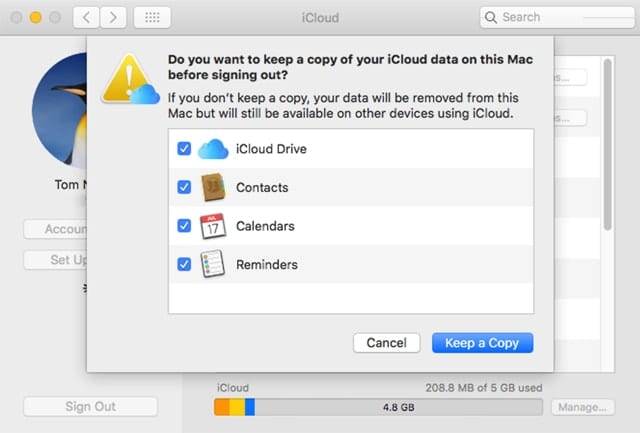Fix The Connections: Cell Fusion Mac OS
I fixed it by shutting down the guest, go to Fusion Virtual Machine Settings Advanced check the 'Pass power status to VM' checkbox, Start the guest again, retry the App Store connection, and it successfully loads web content. Apparently Apple's fog up a mirror test is whether or not the macbook has a battery or power. By default, the OS (Windows, Mac, Linux) should automatically set how to open '.ica' files when trying to launch any resource via Citrix Workspace or Citrix Storefront via the Web Store if the Citrix Workspace App is installed properly. Confirm Citrix Workspace App is installed or use Citrix Workspace App for HTML5 ('Web Browser' option) instead. I have been trying to connect an iPhone to Mac OS High Sierra, I've installed on VirtualBox for testing swift app I am trying to develop. However, even I connect the phone to the USB, I can't select the phone from the devices.The message in the device section says that No device connected to the mac.
After macOS update, some user reported NAT network adapter not working intermittently in VMware Fusion for both Windows and Fedora Linux VM. Ping command show result “PING: transmit failed. General failure.” and network adapter shows as the unidentified network.
This problem symptom remains after reboot the VM image and even after reset, disable, re-enable back, and repair the network adapter. However, Bridged Autodetect is working.
Resolution:
Step 1: Open Terminal.
Step 2: Execute the following command to restart the networking service:sudo /Applications/VMware Fusion.app/Contents/Library/vmnet-cli --stop
sudo /Applications/VMware Fusion.app/Contents/Library/vmnet-cli --start
Remark: A bug in Fusion 10.1.* that breaks the DHCP service on suspend-resume found. Reverting to older versions of VMware Fusion fixes the issue regardless of the macOS version. Do make sure you have updated the VMware Fusion to the latest version at least 10.1.3 (9472307) and restart it after the update completed.
Source: VMware Technology Network Forums > NAT not working in Fusion 10.1.1 for Windows 10 after MAC OS update 10.13.2
Related posts:
In order to recover or transfer data on Android device with third-party development tools, like Gihosoft Android Data Recovery and Mobile Data Transfer, you’ll need to connect Android phone or tablet to PC or laptop and get your device recognized by these tools. Here are step-by-step instructions for the operation.

- Part 1. How to Connect Android to PC in USB Mode
- Part 2. Enable USB Debugging on Different Android OS Version
- Part 3. Enable USB Debugging on Android with Broken Screen
- Part 4. Fix Android Phone won’t Connect to Computer
Part 1. How to Connect Android to PC in USB Mode
- Step 1: Connect your Android phone into the computer using a USB cable. You can use the same cable that you use to charge it.
- Step 2: Tap the “USB” option from the Notification Panel on your Android device, then select the “MTP” mode.
- Step 3: Wait while the driver is installed, then open the “Computer/This PC”, you’ll find your Android device.
The procedure above is a normal connection between the Android device and the PC. If there is anything abnormal during your operation, you can try the tips in part 4. Please note, there is still one more step before the transfer and recovery tool can recognize your device. Just follow the steps in part 2 and 3 to proceed.
Part 2. Enable USB Debugging on Different Android OS Version
Only when USB debugging is turned on, can Android phone be recognized by development tools. The primary function of this mode is to facilitate a connection between an Android device and a computer with the h Android SDK (Software Development Kit). Phones running on different versions of Android OS have different ways to enable USB debugging mode. Please check the Android version of your phone first: Settings > About Phone > Android version.
Detailed Steps on How to Enable USB Debugging on Different Android Versions:

A. For Android 4.2 and above versions:
Go to Settings > About Phone > navigate to Build Number > tap Build Number for seven times. Afterwards, a message will appear informing that you are now a developer.
Back to Settings > Developer Options > tick on USB debugging > tap OK to allow USB debugging.
B. For Android 4.1 and 4.0:
Go to Settings > Developer Options > enable it > USB debugging > allow USB debugging.
C. For Android 2.3 and previous versions:
Go to Settings > Applications > Development > tick on USB debugging. It’s all.
Part 3. Enable USB Debugging on Android with Broken Screen
Once USB debugging is been enabled, the development tool should recognize your Android device. What if your phone screen is broken or cracked? Is it possible to enable USB debugging with broken screen? Don’t worry, you can buy an OTG Adapter to connect your phone and USB mouse, then use the mouse to make actions on the phone to enable USB debugging.
Part 4. Fix Android Phone Wont Connect to Computer
- Change another USB cable instead. Some USB cables may not work properly if they were broken or of interior quality.
- Check the USB port of both Android device and computer to see if they both can work normally. The USB port are prone to getting broken by abnormal ejection and insertion.
- Remove other USB devices that are attached to the computer, as they may be conflicting with the device you wish to connect with.
- Install USB Driver for your Android device. If you’re sure the USB cable and ports are fine, you may need to download the proper USB driver according to the brand and model of your device.